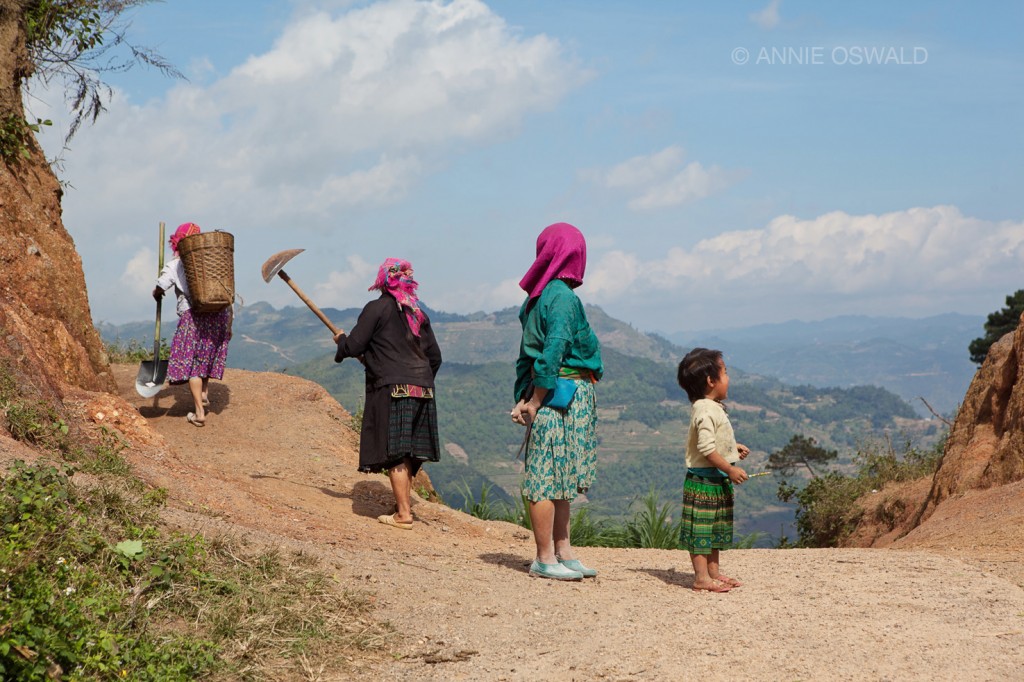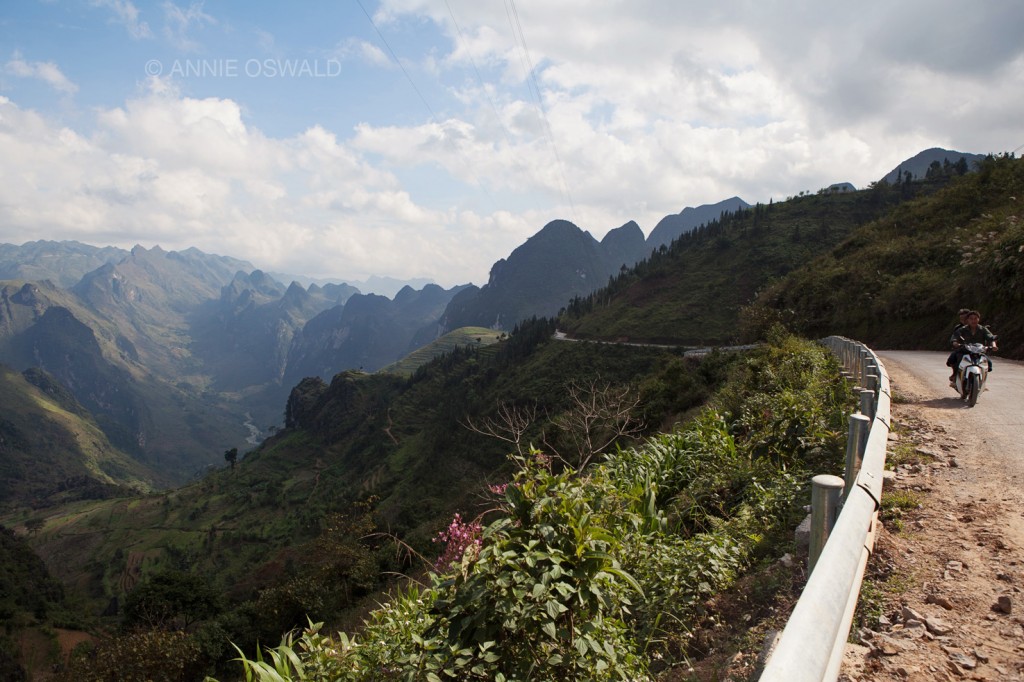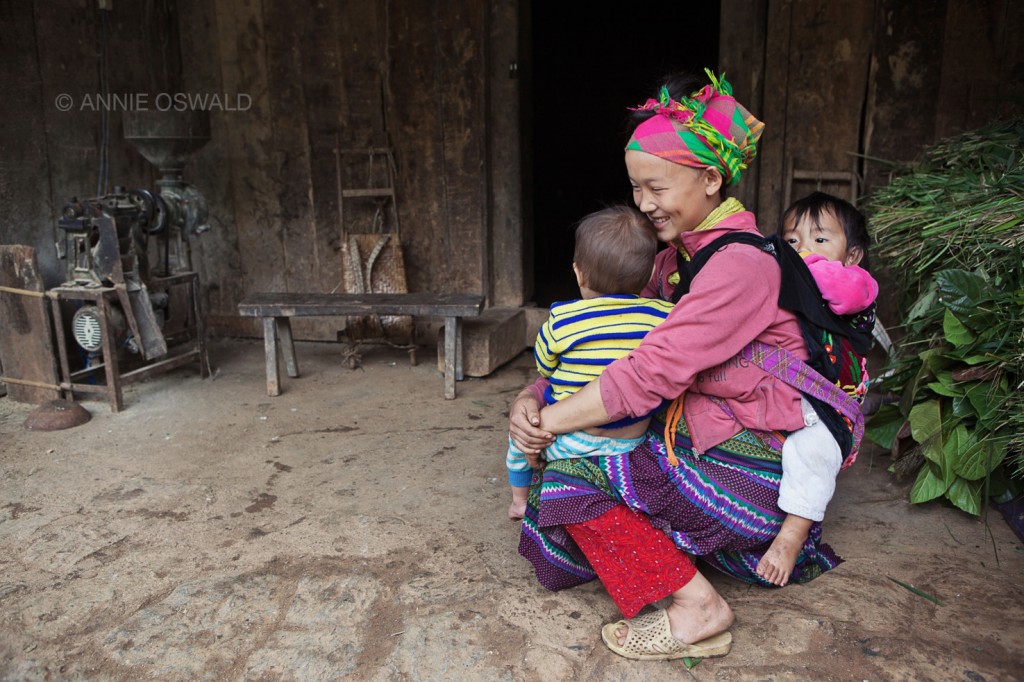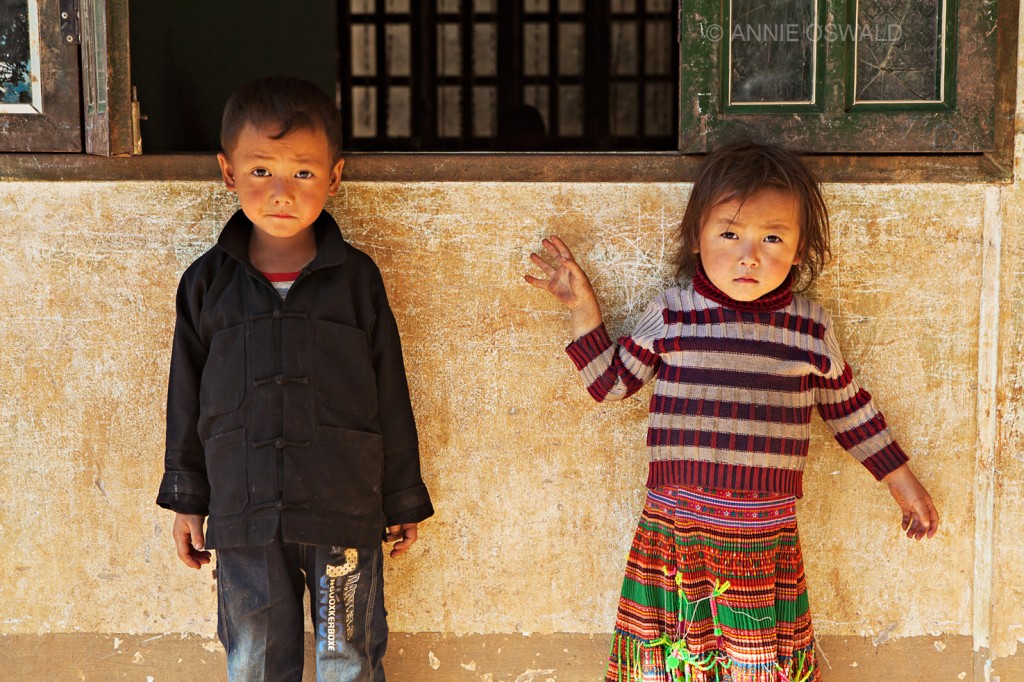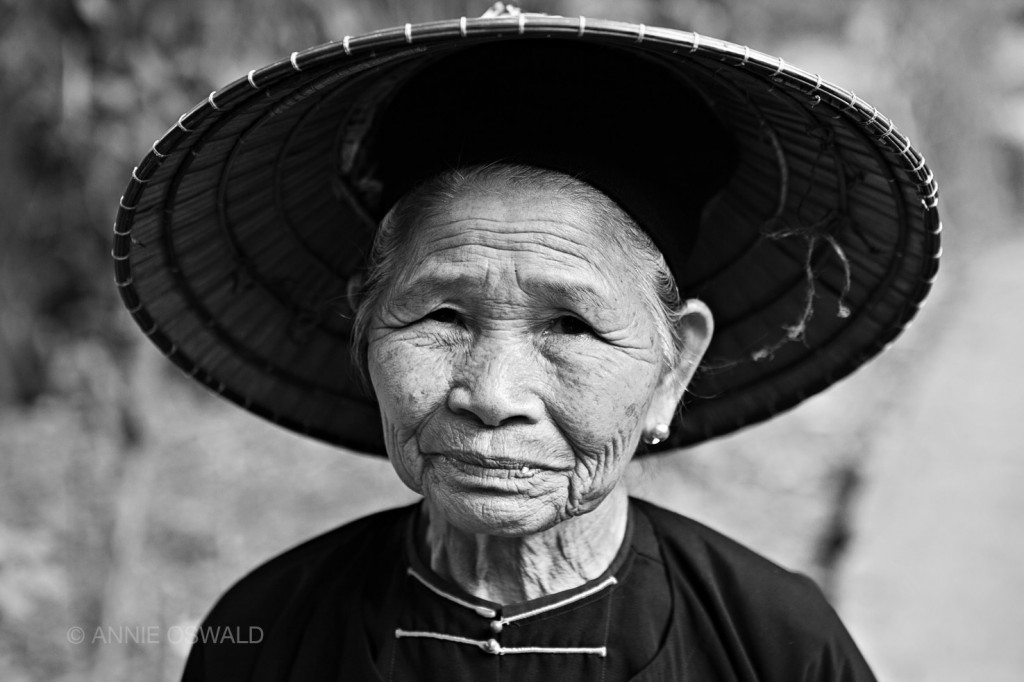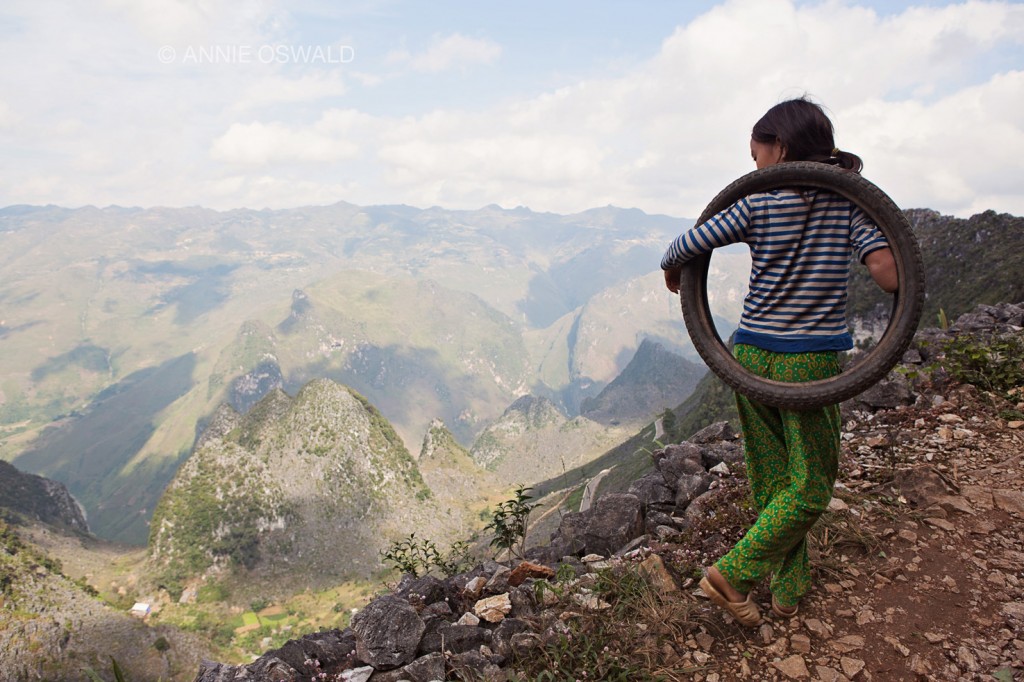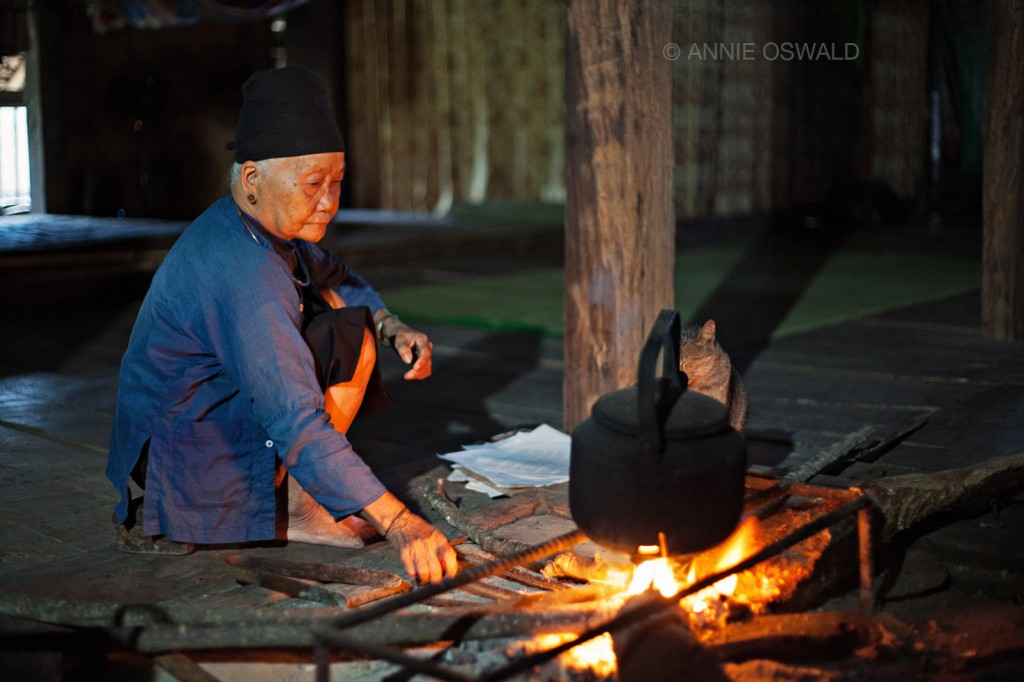The sound of crunching stones underfoot was almost deafening as we hiked up the steep gravel trail to the top of the peak, and onto the roof of Vietnam. Even in the cool northern air we were sweltering under the bright, dry sun. The stones were loose and unstable under our weary legs and before long we were stopping for a breath. I gulped down my water and repositioned my daypack as a breeze rushed past, giving us the energy needed for a final push to the top. With a sheer drop on our left side and solid Earth to our right we hugged the inside wall as we journeyed northward and ever deeper into the mountainous green landscape.
Ha Giang doesn’t so much scream for attention as it sits patiently, confident in the knowledge that its dramatic karst-ridden terrain will at first stun, and undoubtedly thrill any first time visitor to the region. Seated directly below China and reaching up as far north in the country as one can possibly travel, the vast majority of this province is made up of ethnic hill tribes, most notably the Hmong and Tay people. It feels like the edge of the world, or at least the country, and it is. It’s the end of the line, the last stop, and Vietnam’s farewell. There’s something wild and liberating about traveling to the end of a place, to its furthest extremities. Like a mountaineer reaching a summit and gazing out towards infinity, this borderland feels like Earth’s outer reaches.
Thousands of limestone peaks, known as Karsts, rise up from the ground at varying angles and sizes creating dense clusters of rocky, forested, lump shaped mountains. This unique topography, whilst beautiful, is not ideal land for agricultural activity and so the cultivation of rice and other crops is limited in this region. For all the limitations the geography does place on growing and harvesting, people still rely entirely on the land for their survival. The small valleys and slopes that are capable of being farmed are covered in cornfields and rice paddies. The locals carrying their harvests to and from the fields traverse the dirt tracks and pathways connecting one village to another. What little space is left for other crops become small allotments for sweet potatoes, leafy greens and cassava. At the local markets these crops are then sold or bartered for the rice that sustains life for so many.
On we trekked across a narrow mountain pass into a Hmong village set in the shadow of a particularly mammoth peak. Heading down the lone road towards the village were two young girls carrying large bundles of vegetation on their backs, their bright traditional attire making it arduously difficult for us to avert our eyes from the radiant pinks, greens and blues. As we walked past we smiled, and they shyly smiled back before they ascended the gently sloping hill and faded from view. We rounded a corner and came upon a group of modest homesteads set in the valley. The village was quiet with only the faint sounds of clucking chickens and women chattering. As we reached the end of the road we heard an excited “Nyob Zoo!” or “Hello!” in Hmong. Standing in front of an unassuming wooden house were a group of three women smiling and gesturing for us to approach. Their interest in me rivaled mine in them and as my guide fluently spoke the local dialect, we happily joined them on the porch for pleasantries. The eldest of the women was most curious. Eyeing me up and down as I stood reservedly in my t-shirt, mud-caked trousers and hiking boots, she smiled cheekily at what must have been a strange, unexpected and comically unsightly spectacle for a quiet Wednesday afternoon. She asked my guide about all of the particulars of my life and in between answers warmly looked towards me as an old friend would. There was a gentleness and openness in her expression that made me feel quite welcome, and with her permission I snapped a few photos.
After several minutes of warm conversation we carried on through that village and the next, with each passing village bringing more friendly smiles and exchanges as well as curious stares. Seeing the day-to-day of these hill tribes felt like a brief glimpse back to a way of life seemingly no longer in existence. Small children are seen out in the fields helping their mothers gather weeds as men ride past with baskets of piglets harnessed to their scooters. Young girls harvest the sweet potato fields with infant siblings strapped to their backs and elderly women weave hemp plants into textiles outside their homes. Groups of adolescents walk down the road rolling used bicycle tires with sticks as they keep an eye on their goat herds that graze the hillsides beside them. The scent of pine and burning corn stalks gives the air a woody alpine freshness not found in regions further south, and as the early evening sun dips below the peaks cooling the temperature considerably, one notices how incredibly hard life is up in these mountains. There’s a rawness and hardiness to the people as they live constantly on the brink of feast or famine, vulnerable to the fickleness of their natural surroundings and dependent entirely on their own industrious measures. But their distinctive cultures and time-honored customs continue to exist, and like the intricately woven patterns and motifs sewn into the fabric of their traditional dress, these varied and vibrant cultures add immense value to the diversity and magnetism of the country as a whole.
As nightfall loomed and the villagers retreated into their homes we hurriedly trekked back out of the valley and towards our pick up point nearer the road. Realizing that darkness now had the advantage, we quickened the pace and settled into a slow trot until we had reached the car. Driving along meandering roads perilously carved into the sides of the mountain and negotiating the famous Ma Pi Leng Pass was the setting for our final goodbye to the grandeur of this region. Staring out the open window at the silhouetted peaks, I thought about what I’d first heard of Ha Giang that made me want to visit. I’d listened to stories of its striking beauty, breathtaking roads and grand vistas, but it was the part about its wildness that had me captivated. The thought of exploring untamed pastures and the adventures they so often yield was what intrigued me most. In this regard I was certainly not disappointed, but where my expectations were vastly exceeded was the intimate way in which I experienced this wildness. The affectionate encounter I had with the women at their home and the warm smiles exchanged in the villages that I hiked through, that was the real adventure I was hoping for. The mountains and scenery were always a given but those momentary human connections were not. I sunk back into the passenger seat contentedly and mused over this for a while.
A few hours later we arrived at our homestay in a traditional bamboo stilt house, where we were treated to a generous supper of fried silk worms, spring rolls, sautéed pork, vegetables and lively conversation. Not long after the last scraps were devoured and the family had gone to sleep did I find myself lying cheerfully and haphazardly under a mosquito net, the abundant servings of rice wine having gone to my head. Despite the cloudiness, thoughts of the previous days events filled my mind and I soon began to wonder if I’d ever return to this memorable place, to this last wild frontier. Too exhausted to ponder the possibilities, but with a smile anchored to my weather worn face, I quickly drifted off to sleep in the cool and calm of the deep north.
For more images head here.

